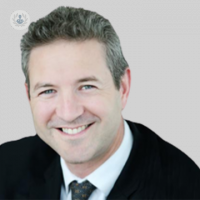An insight into VASER Liposuction
Written in association with:VASER Liposuction is a new surgical option, which is becoming increasingly popular in the UK, with some patients favouring it over traditional liposuction. Renowned consultant plastic surgeon Mr Charles Durrant is here to give an insight into the surgical method, explaining how it differs from traditional liposuction and how the procedure works.
What is VASER liposuction, and how does it differ from traditional liposuction techniques?
VASER liposuction is a relatively new and exciting addition to the world of body contouring. Unlike standard liposuction, which involves mechanically tearing strips of fat and aspirating it through the cannula, VASER sends ultrasound waves into the fat, causing it to liquefy.

The liquified fat can then be more easily and gently removed using standard liposuction techniques, causing less trauma to the other structures beneath the skin such as nerves, blood vessels, and fibrous support. As a result, there is less bleeding and bruising, less pain and a faster recovery with better retraction of the skin afterwards, particularly if further assisted using an energy device such as Renuvion.
How does VASER liposuction work, and what areas of the body can be treated with this procedure?
Due to the precise targeting of fat, VASER can be used in almost every part of the body where there is subcutaneous fat. The most common areas are the neck, arms, chest, tummy, back, hips, thighs, knees, legs – almost everywhere except the face and feet!
Who are the ideal candidates for VASER liposuction, and what factors should be considered before undergoing the procedure?
The ideal patient for VASER is a fit and healthy patient who wishes to augment their own exercise programme to remove targeted areas of stubborn fat. As with any other form of liposuction, it is not a quick-fix alternative to a healthy lifestyle. Gradual fat reduction through diet and exercise cannot be beaten, but stubborn zones of fat and the last areas of definition can prove tough to reach.
What are the potential benefits and risks associated with VASER liposuction, and how does it compare to other liposuction methods?
As previously mentioned, VASER allows precise targeting of stubborn zones of fat and areas which are difficult to reach, in order to help attain a better silhouette. However, it is essential to take care of yourself following the surgery, in order to maintain the results, therefore, it is crucial that following VASER Lipo, patients maintain their active lifestyles in order to maximise the longevity of the results.
What is the typical recovery process after VASER liposuction, and what post-operative care is necessary to achieve the best results?
The surgery itself can take anywhere from 45 minutes to several hours depending on the volume of fat to be removed and the degree of definition that is required.
All VASER patients must wear compression garments day and night for six weeks after surgery and undergo regular sessions of manual lymphatic drainage massage in order to maximise the results of surgery.
Additionally, it is important that patients stay active and hydrated after surgery. They should also avoid strenuous activity that raises the blood pressure too high as this can prolong the resolution of swelling.
They should also expect the final result to take up to a year to achieve, although many patients see a huge improvement three months after the surgery has taken place.
To book a consultation with Mr Durrant, simply visit his Top Doctors profile today.


